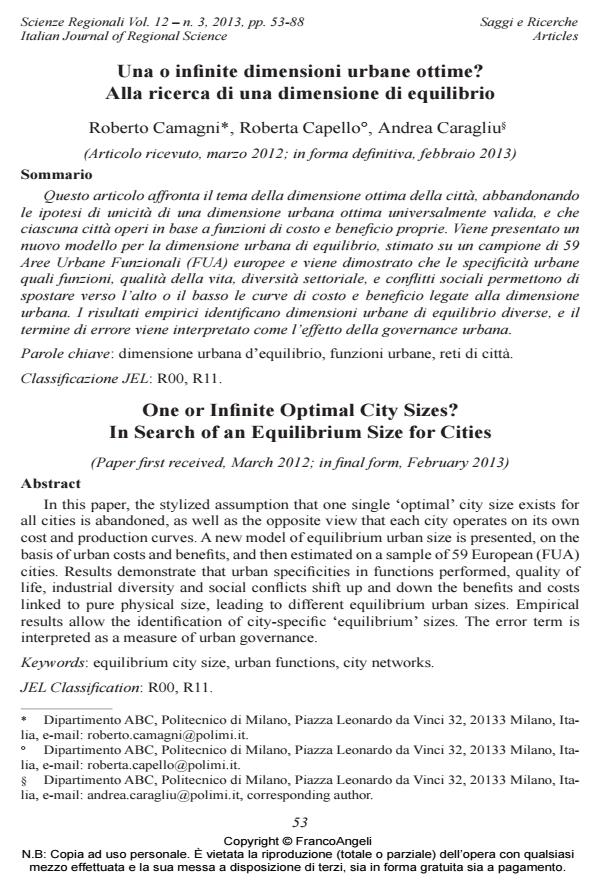One or Infinite Optimal City Sizes? In Search of an Equilibrium Size for Cities
Journal title SCIENZE REGIONALI
Author/s Roberto Camagni, Roberta Capello, Andrea Caragliu
Publishing Year 2013 Issue 2013/3
Language Italian Pages 36 P. 53-88 File size 639 KB
DOI 10.3280/SCRE2013-003003
DOI is like a bar code for intellectual property: to have more infomation
click here
Below, you can see the article first page
If you want to buy this article in PDF format, you can do it, following the instructions to buy download credits

FrancoAngeli is member of Publishers International Linking Association, Inc (PILA), a not-for-profit association which run the CrossRef service enabling links to and from online scholarly content.
In this paper, the stylized assumption that one single ‘optimal’ city size exists for all cities is abandoned, as well as the opposite view that each city operates on its own cost and production curves. A new model of equilibrium urban size is presented, on the basis of urban costs and benefits, and then estimated on a sample of 59 European (FUA) cities. Results demonstrate that urban specificities in functions performed, quality of life, industrial diversity and social conflicts shift up and down the benefits and costs linked to pure physical size, leading to different equilibrium urban sizes. Empirical results allow the identification of city-specific ‘equilibrium’ sizes. The error term is interpreted as a measure of urban governance.
Keywords: Equilibrium city size, urban functions, city networks.
Jel codes: R00, R11
- Il ruolo delle piccole e medie città nell'economia 3.0. Evidenze dal caso italiano Fabiano Compagnucci, Augusto Cusinato, in SCIENZE REGIONALI 2/2016 pp.61
DOI: 10.3280/SCRE2016-002004 - Analysis and Development of Sustainable Urban Production Systems Max Juraschek, pp.39 (ISBN:978-3-030-76601-6)
Roberto Camagni, Roberta Capello, Andrea Caragliu, Una o infinite dimensioni urbane ottime? Alla ricerca di una dimensione di equilibrio in "SCIENZE REGIONALI " 3/2013, pp 53-88, DOI: 10.3280/SCRE2013-003003